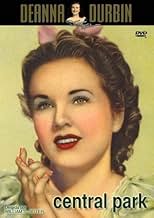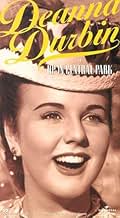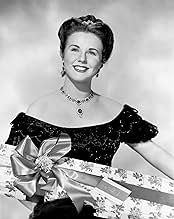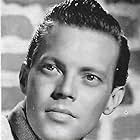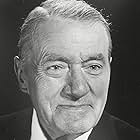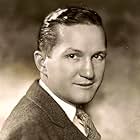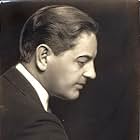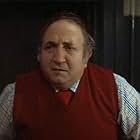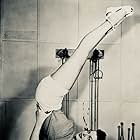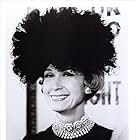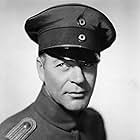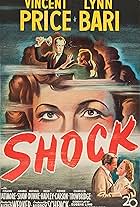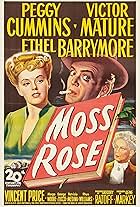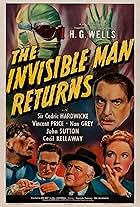A newspaper reporter and the daughter of an immigrant maintenance man help expose political corruption in New York City.A newspaper reporter and the daughter of an immigrant maintenance man help expose political corruption in New York City.A newspaper reporter and the daughter of an immigrant maintenance man help expose political corruption in New York City.
Nellie Fisher
- Dancer
- (as Nelle Fisher)
Boyd Ackerman
- Policeman
- (uncredited)
Patricia Alphin
- Guest
- (uncredited)
Alice Backes
- Swedish Immigrant Girl
- (uncredited)
G. Pat Collins
- Ward Heeler
- (uncredited)
Storyline
Did you know
- TriviaDuring filming, sepia (brownish) tone was tested in a few scenes, but the released picture is entirely in standard black and white.
- GoofsWhen Timothy Moore is learning to read , he reads from Beatrix Potter's Tale of Peter Rabbit , which wasn't published until 1902 .
- SoundtracksOh Say, Can You See (What I See)
(uncredited)
Music by Sigmund Romberg
Lyrics by Dorothy Fields
Sung by Deanna Durbin
Featured review
Question: Who is the most famous/infamous political boss in U.S. History? I suspect that out of ten informed people, the name pops up is William M. Tweed, Tammany Hall Sachem from 1863 to 1874 (when circumstances forced him to resign). Tweed held many important posts in his years of ... public service. He was a city Commissioner, an alderman, a New York State Senator. He was even (for only one term in the middle 1850s) a Congressman in Washington. He was also a bank director and a corporation director. He is, of course, best remembered for supposedly looting the city of New York out of between forty and two hundred million dollars in fraudulent contracts and kickback schemes. Tweed was sent to prison in 1874, escaped in 1875, was recaptured in Spain in 1876 and returned to the U.S., and died in prison in 1878.
There have been dozens of political bosses in our nation's history. Senator Marcus Hanna, who helped make his friend William McKinley President, can be an example of a successful boss (although a relatively honest and honorable one). Matt Quay of Pennsylvania was another. But only historians remember Hanna or Quay or Frank Hague of New Jersey or Nelson Aldrich of Rhode Island. Tweed stands out because of one man: the cartoonist Thomas Nast. Nast was a genius in political cartooning (even now his best work is still effective, 102 years after his death and 133 years after his Tweed cartoons got really underway). He took the fat, somewhat vulgar looking Tweed and made him look like the human image of greed (it helped that the name and the word rhymed). It immortalized cartoonist and subject no matter what. Tweed had three or four successors as head of Tammany Hall. At least two of them, Richard Croker and Charles Murphy, were more important and powerful than Tweed ever was. Nobody thinks of them when the term "TAMMANY HALL" comes up - they think of Tweed.
Is this image fair? Most historians follow Gustavus Myers account of the Tweed Rings rise and fall to this day (from Myers book on Tammany Hall). Only recently has a dent been put into this account. In 1977 TWEED'S NEW YORK was written by Leo Hershkovits, and he pointed out that Tweed was working for the interests of all the newly arriving immigrant groups struggling to get settled in the U.S. He was also backing civic improvements like the Brooklyn Bridge, the Metropolitan Museum of Art, Prospect and Central Parks, the first attempt at a New York Subway system. His enemies suggested that his interest was in the boodling contracts he and his cohorts gave out, but those same enemies were quite hostile to immigrants (many were former Know Nothings)and most came from the rich part of society. Also many were Republicans, or ambitious Democrats with shady pasts they tried to hide (Samuel Tilden, the future Governor of New York and Presidential Candidate, had been a supporter of the southern Democratic views of slavery and states rights in the Civil War. Tilden and Tweed were enemies). Herkovits may overstate the case but he does reduce the legend a bit. The nature of political life in Tammany was to make profitable deals, and they depended on the immigrants for votes. However the evidence of the large scale thefts is simply not there. The worst example of it, the "Tweed" Courthouse behind City Hall in Manhattan, overran the original two million dollar cost estimate by thirteen million dollars more. It still suggests great corruption, but not the two hundred million losses Myers throws out. I might add that Tweed Courthouse more than has repaid it's original costs. If you watch LAW AND ORDER in one of its various guises, scenes in the courts are shot in that building.
Believe it or not there have only been two films dealing at all with Boss Tweed. More recently Jim Broadbent played Tweed in Scorsese's GANGS OF NEW YORK. He played him as in cahoots with powerful thug (and nativist!) Bill the Butcher Cutter (Daniel Day-Lewis). Bill the Butcher was based on a real thug and killer, Bill "the Butcher" Poole, who was killed by rival gangsters at the Stanwix Hall Saloon in 1857 (six years before the Civil War Draft Riots the film presents). Tweed would never have been allied with Poole, as Poole belonged to the American Party, not the Democrats. However, Broadbent's Tweed at least looked more like the genuine article physically than his one predecessor.
Tweed weighed over three hundred pounds (his death was hastened by diabitis). The actor playing Boss Tweed in UP IN CENTRAL PARK was Vincent Price, playing him like a handsome, powerful (and powerhungry) man. In his dressing gown, entertaining Deanna Durbin (an Irish immigrant lass with education, who learns that Tweed is out for his own good before anyone else), Price is smooth and cultured. No doubt Tweed was intelligent, but his taste in art and literature probably did not match Price's characterization. One wishes Price had tackled the role later in his career (say about the time he did Matthew Hopkins in THE CONQUEROR WORM), and possibly he could have fit the role properly. It is hard to say. He did not match the real Tweed. This is not to say that he is acting poorly. His performance gives the film some zest, and even honesty (when he falls he admits to Durbin that he was brought up to believe that you took what you want). And to be fair, Price's Tweed has enough guts to remain and face the consequences while his accomplices, Governor Motley (Thurston Hall) and Mayor Oakley run off. By the way, Tweed's allied Governor was Governor John T.Hoffman (the last New York City Mayor to rise to the state's Governorship) and the Mayor was Mayor Oakley Hall.
The Sigmund Romberg score for UP IN CENTRAL PARK is not one of his best, and parts of it have been deleted. There was a number about Central Park (where Durbin's father has a job through Tweed) called, "It's the Big Backyard of the City". Price also has a song, "Would You Like to See MY CURRIER & IVES" which is reduced to the song cue in the dialogue, before a scene ends. Durbin does her best, but it is not her best film. It is a mediocre movie, which is best seen to remind oneself of the story of Tweed and his fall, and how it still needs a master film maker to tell it properly.
There have been dozens of political bosses in our nation's history. Senator Marcus Hanna, who helped make his friend William McKinley President, can be an example of a successful boss (although a relatively honest and honorable one). Matt Quay of Pennsylvania was another. But only historians remember Hanna or Quay or Frank Hague of New Jersey or Nelson Aldrich of Rhode Island. Tweed stands out because of one man: the cartoonist Thomas Nast. Nast was a genius in political cartooning (even now his best work is still effective, 102 years after his death and 133 years after his Tweed cartoons got really underway). He took the fat, somewhat vulgar looking Tweed and made him look like the human image of greed (it helped that the name and the word rhymed). It immortalized cartoonist and subject no matter what. Tweed had three or four successors as head of Tammany Hall. At least two of them, Richard Croker and Charles Murphy, were more important and powerful than Tweed ever was. Nobody thinks of them when the term "TAMMANY HALL" comes up - they think of Tweed.
Is this image fair? Most historians follow Gustavus Myers account of the Tweed Rings rise and fall to this day (from Myers book on Tammany Hall). Only recently has a dent been put into this account. In 1977 TWEED'S NEW YORK was written by Leo Hershkovits, and he pointed out that Tweed was working for the interests of all the newly arriving immigrant groups struggling to get settled in the U.S. He was also backing civic improvements like the Brooklyn Bridge, the Metropolitan Museum of Art, Prospect and Central Parks, the first attempt at a New York Subway system. His enemies suggested that his interest was in the boodling contracts he and his cohorts gave out, but those same enemies were quite hostile to immigrants (many were former Know Nothings)and most came from the rich part of society. Also many were Republicans, or ambitious Democrats with shady pasts they tried to hide (Samuel Tilden, the future Governor of New York and Presidential Candidate, had been a supporter of the southern Democratic views of slavery and states rights in the Civil War. Tilden and Tweed were enemies). Herkovits may overstate the case but he does reduce the legend a bit. The nature of political life in Tammany was to make profitable deals, and they depended on the immigrants for votes. However the evidence of the large scale thefts is simply not there. The worst example of it, the "Tweed" Courthouse behind City Hall in Manhattan, overran the original two million dollar cost estimate by thirteen million dollars more. It still suggests great corruption, but not the two hundred million losses Myers throws out. I might add that Tweed Courthouse more than has repaid it's original costs. If you watch LAW AND ORDER in one of its various guises, scenes in the courts are shot in that building.
Believe it or not there have only been two films dealing at all with Boss Tweed. More recently Jim Broadbent played Tweed in Scorsese's GANGS OF NEW YORK. He played him as in cahoots with powerful thug (and nativist!) Bill the Butcher Cutter (Daniel Day-Lewis). Bill the Butcher was based on a real thug and killer, Bill "the Butcher" Poole, who was killed by rival gangsters at the Stanwix Hall Saloon in 1857 (six years before the Civil War Draft Riots the film presents). Tweed would never have been allied with Poole, as Poole belonged to the American Party, not the Democrats. However, Broadbent's Tweed at least looked more like the genuine article physically than his one predecessor.
Tweed weighed over three hundred pounds (his death was hastened by diabitis). The actor playing Boss Tweed in UP IN CENTRAL PARK was Vincent Price, playing him like a handsome, powerful (and powerhungry) man. In his dressing gown, entertaining Deanna Durbin (an Irish immigrant lass with education, who learns that Tweed is out for his own good before anyone else), Price is smooth and cultured. No doubt Tweed was intelligent, but his taste in art and literature probably did not match Price's characterization. One wishes Price had tackled the role later in his career (say about the time he did Matthew Hopkins in THE CONQUEROR WORM), and possibly he could have fit the role properly. It is hard to say. He did not match the real Tweed. This is not to say that he is acting poorly. His performance gives the film some zest, and even honesty (when he falls he admits to Durbin that he was brought up to believe that you took what you want). And to be fair, Price's Tweed has enough guts to remain and face the consequences while his accomplices, Governor Motley (Thurston Hall) and Mayor Oakley run off. By the way, Tweed's allied Governor was Governor John T.Hoffman (the last New York City Mayor to rise to the state's Governorship) and the Mayor was Mayor Oakley Hall.
The Sigmund Romberg score for UP IN CENTRAL PARK is not one of his best, and parts of it have been deleted. There was a number about Central Park (where Durbin's father has a job through Tweed) called, "It's the Big Backyard of the City". Price also has a song, "Would You Like to See MY CURRIER & IVES" which is reduced to the song cue in the dialogue, before a scene ends. Durbin does her best, but it is not her best film. It is a mediocre movie, which is best seen to remind oneself of the story of Tweed and his fall, and how it still needs a master film maker to tell it properly.
- theowinthrop
- Jun 27, 2004
- Permalink
Details
- Runtime1 hour 24 minutes
- Color
- Aspect ratio
- 1.37 : 1
Contribute to this page
Suggest an edit or add missing content


